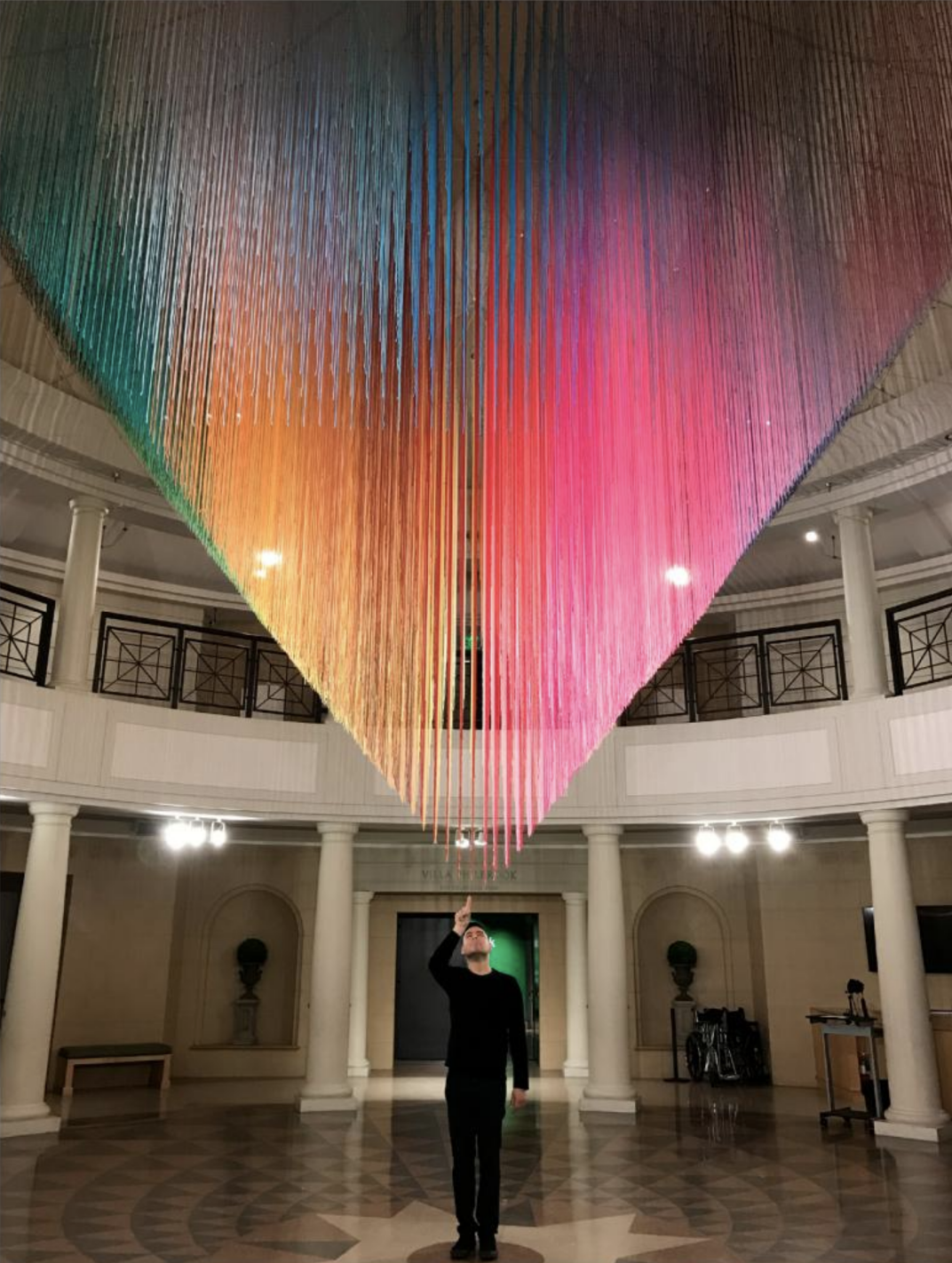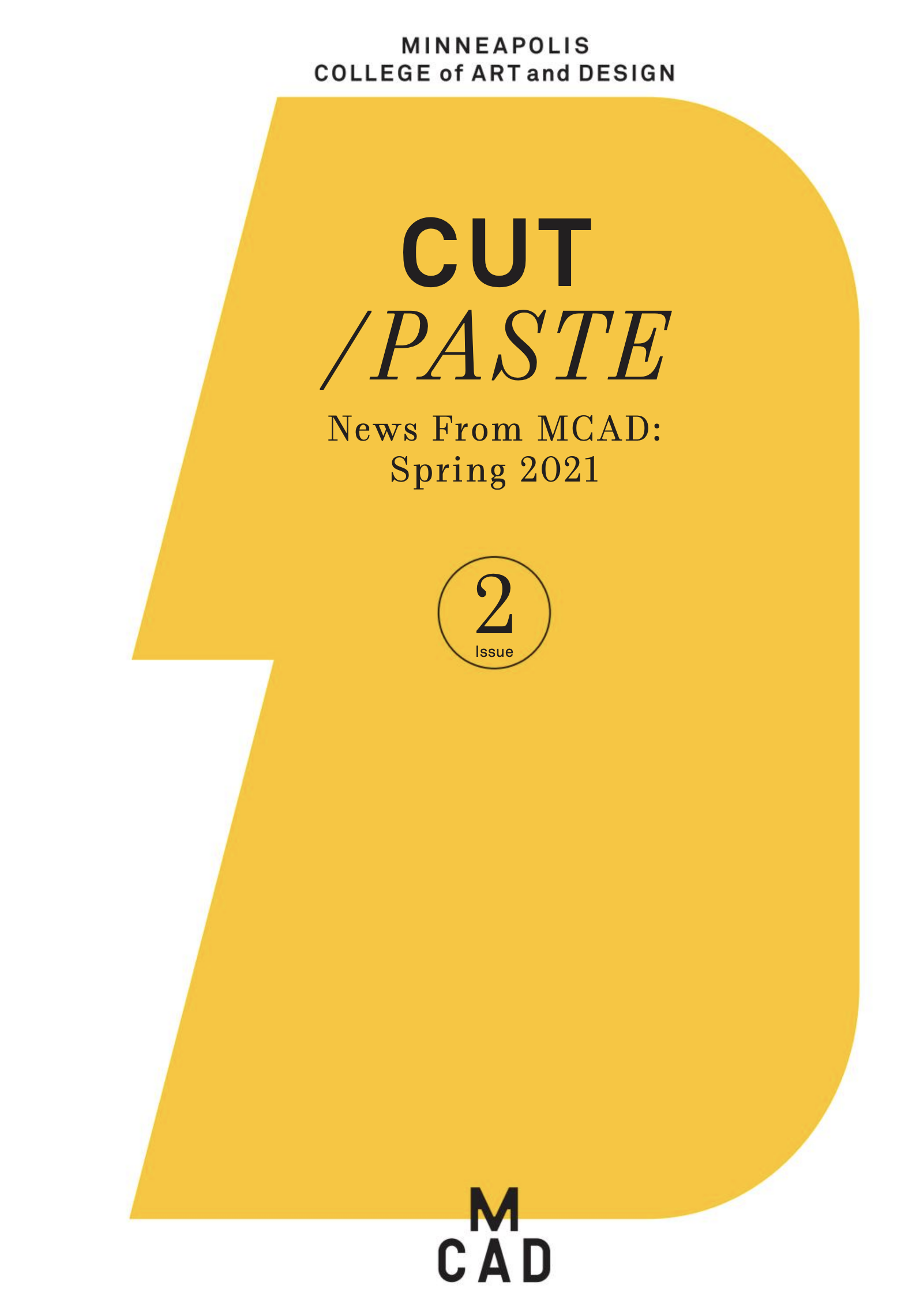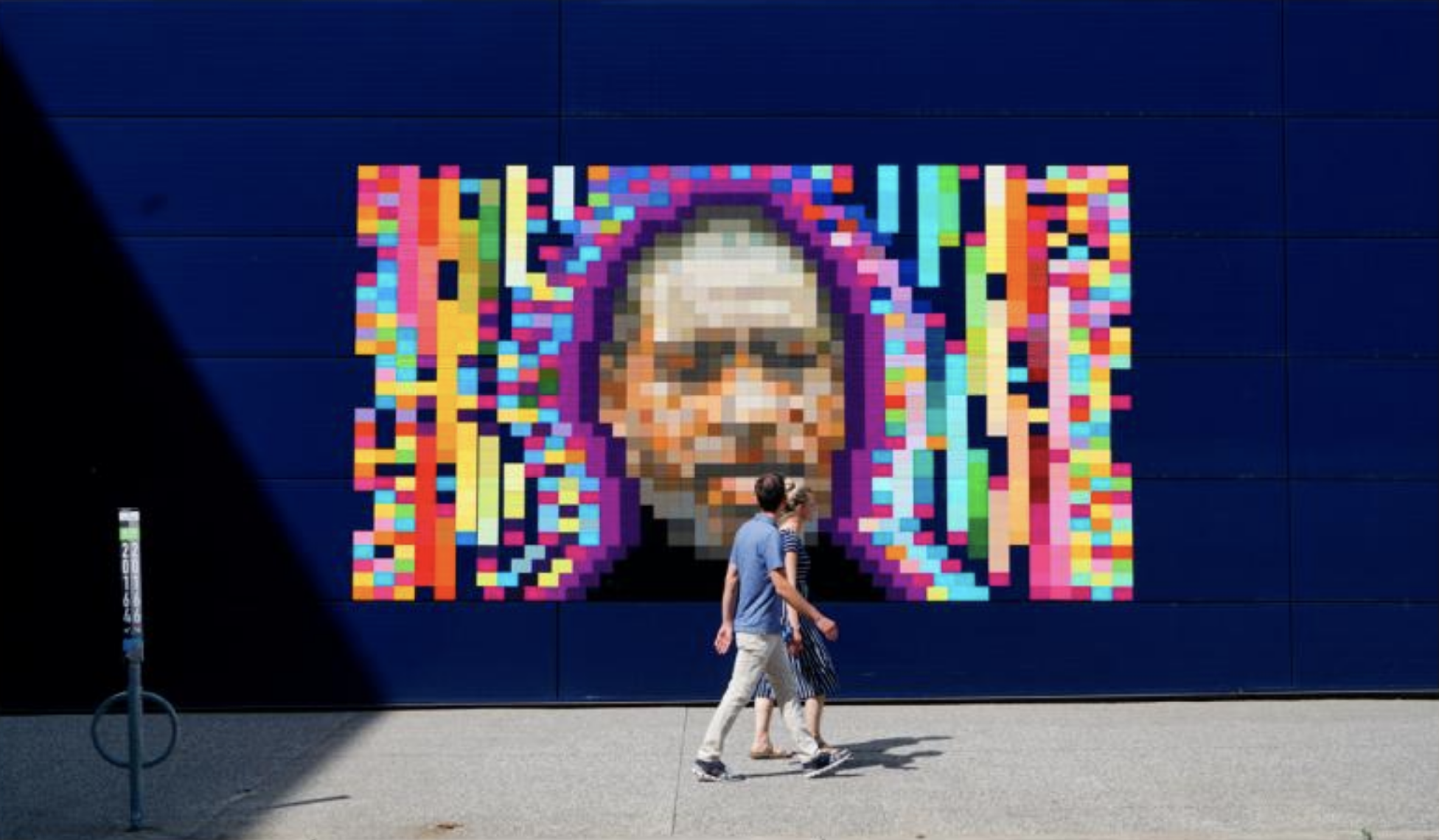

The artist known as HOTTEA, ‘07, looks for new ways to build on the beauty of impermanence
Since graduating from MCAD with a degree in graphic design, HOTTEA (a.k.a. Eric Rieger, ‘07) has built an impressive body of work designed to disintegrate. Whether it’s stringing miles of yarn into sky bridges of color across Brooklyn’s Williamsburg Bridge, applying oversized magnets to the facade of the Guthrie Theater, or casting light and color across Minneapolis’s flour mills, very little of the artist’s meticulous, multicolored work is ever meant to last.
“But I do want to make a lasting impact on the viewer, so you have an epiphany about the space and materials being used,” he says. “My goal isn’t to get into permanent collections or the most prestigious walls of whatever gallery, but to make the viewer think differently.”
Inspired in part by his late grandmother, who taught him to knit, HOTTEA began experimenting with yarn and fencing to create typefaces that started popping up around the Twin Cities more than a decade ago. Since then, the scale and ambition of his yarn installations have transcended the simple materials, with private and corporate commissions that have taken him from the Sydney Opera House to Sao Paolo’s MADE festival, and multi-storey installations like “hot lunch”, a piece built in 2017 over the course or two months at the Mall of America with more than 13,000 strands of color unraveled from more than 700 pounds of yarn. Though his recent work has expanded to include installations of wood, magnets, and other media, one common denominator is a delight in bringing art to where it’s least expected–on a cyclone fence, over a weed-cracked tennis court, in the fissures of a crumbling stone facade, or on the underbelly of a bridge.
A former graffiti writer who got arrested and tazed for adding typeface to public property, HOTTEA has learned to be careful about the words he applies to his work. “I used to try to describe what I’m doing with words like ‘non-destructive,’ but then other graffiti artists might take offense to that,” he says. “Let’s just say I’m trying to adhere or build or install art without what the police would consider damage to property. I think if I didn’t know what it was like to see my family in such pain over the consequences of me doing graffiti, I might not be so passionate about installing things temporarily and not altering the surface in any way. That’s kind of how my graffiti roots are impacting my current work.”

Last spring, HOTTEA was about to unveil a large-scale, color-field work made of magnets when Minneapolis erupted in protests over police violence. Instead, he put the project on hold, and created a large-scale pixelated portrait of George Floyd, which he got permission to apply to the facade of the Guthrie Theater–a first for both the artist and the institution. “I’d been out scouting for locations, looking for metal surfaces or large metal warehouses when I passed by the Guthrie and realized, ‘Wait a minute, this whole building is metal. The entire facade could be a canvas for me.’”
Epiphanies like that are what keep him inspired, and convinced he’s found the right platform for his vision. “It’s important to have an original idea, or something no one’s thought of before, but consistency also matters, and continuing to find innovation within that same idea,” he says, as he considers the advice he’d offer current MCAD students. “I do believe that not everyone is meant to be a full-time artist. But if you’re obsessed, it’s possible.”
Written for MCAD cut/paste 2021
